Key takeaways:
- Drones offer unique aerial perspectives and access to hard-to-reach locations, enhancing storytelling in filmmaking.
- Essential equipment includes a high-quality camera gimbal, spare batteries, and proper lighting to ensure professional results.
- Training programs are vital for mastering drone operation, emphasizing both technical skills and safety regulations.
- Pre-flight checks, practicing in varied environments, and having a shot list can significantly improve the effectiveness of drone filming.
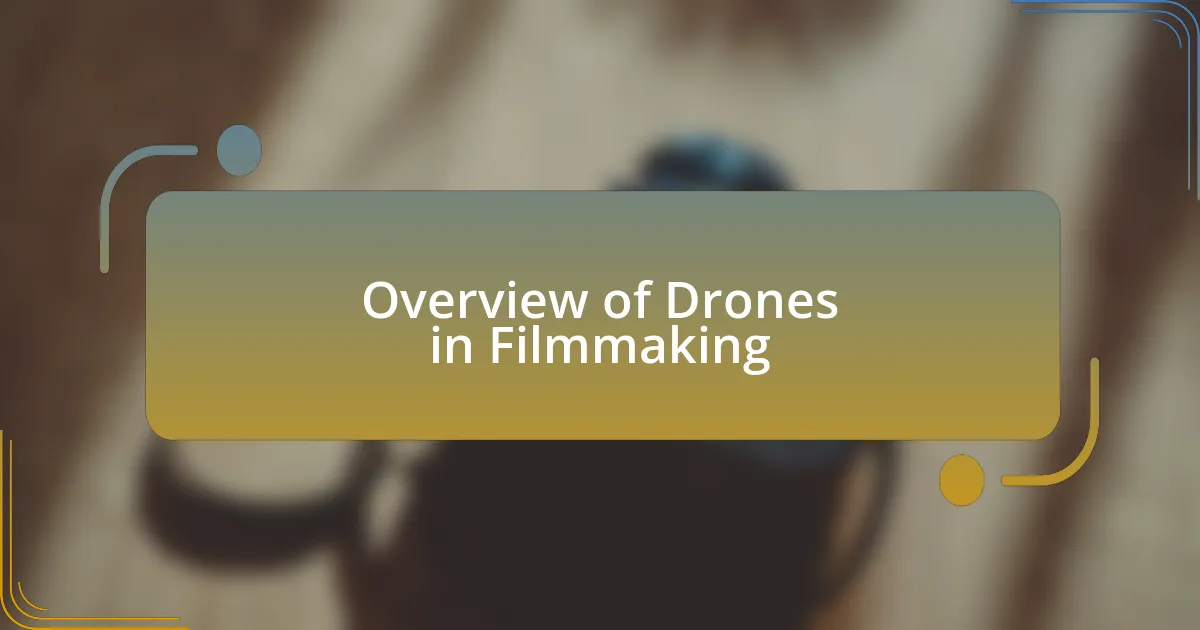
Overview of Drones in Filmmaking
Drones have revolutionized the way we create visuals in filmmaking, offering unique aerial perspectives that were once only possible with expensive equipment like helicopters. For instance, I remember a project where we used a drone to capture sweeping landscapes; the results were breathtaking and elevated the overall narrative of the film. Isn’t it incredible to think that something so compact can change storytelling dynamics?
One of the most compelling aspects of drones is their ability to access hard-to-reach locations. I often think about the time we shot over rough terrains; there was a palpable excitement in the crew as we watched the drone navigate through the air. The freedom that drones provide filmmakers to portray their visions without the limitations of traditional methods is truly exhilarating.
However, with this new technology comes the responsibility to use it ethically and creatively. I’ve seen how easy it is for filmmakers to get caught up in the novelty of drone shots, often overlooking the storytelling aspect. How do we strike the right balance between technical prowess and narrative integrity? This balance is crucial for creating impactful films that resonate with audiences.
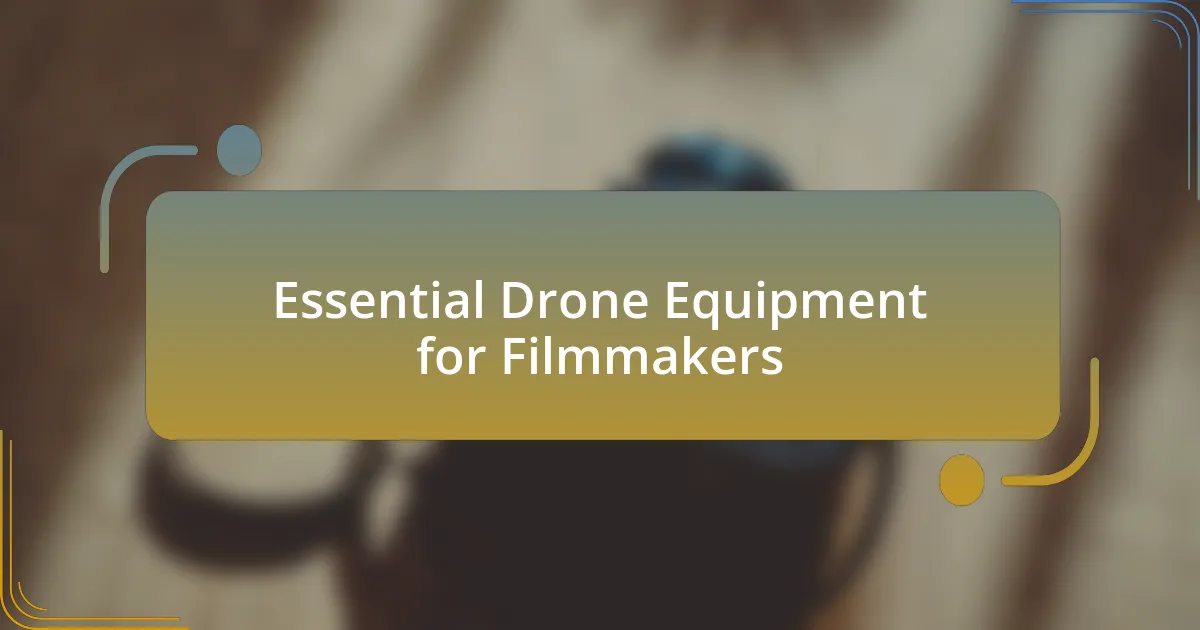
Essential Drone Equipment for Filmmakers
When gearing up for drone filmmaking, choosing the right equipment is key to achieving those stunning visuals. For instance, I remember when I first decided to invest in a high-quality camera gimbal for my drone. The stability it offered was a game-changer; my shots were smooth and professional rather than shaky and distracting. How often have you watched a film and been pulled out of the moment because of jerky footage? That’s where a good gimbal comes into play.
Another essential piece of equipment is spare batteries. I still recall a project where we planned some ambitious aerial shots, only to be cut short because a single battery couldn’t support our extensive shoot schedule. The frustration was palpable, and it taught me the importance of preparation. Have you ever faced a similar situation on set? The last thing you want is to miss out on capturing that perfect shot simply because your drone ran out of juice.
Don’t underestimate the power of proper lighting, either. I learned this the hard way during a twilight shoot. The visuals ended up looking flat because I hadn’t accounted for the diminishing natural light. I now always pack portable LED lights alongside my drone gear. They can make a remarkable difference by enhancing the scene’s mood and depth. So, what essentials can you add to your kit to elevate your drone filmmaking? Consider your individual style and needs—there’s always room for exploration!
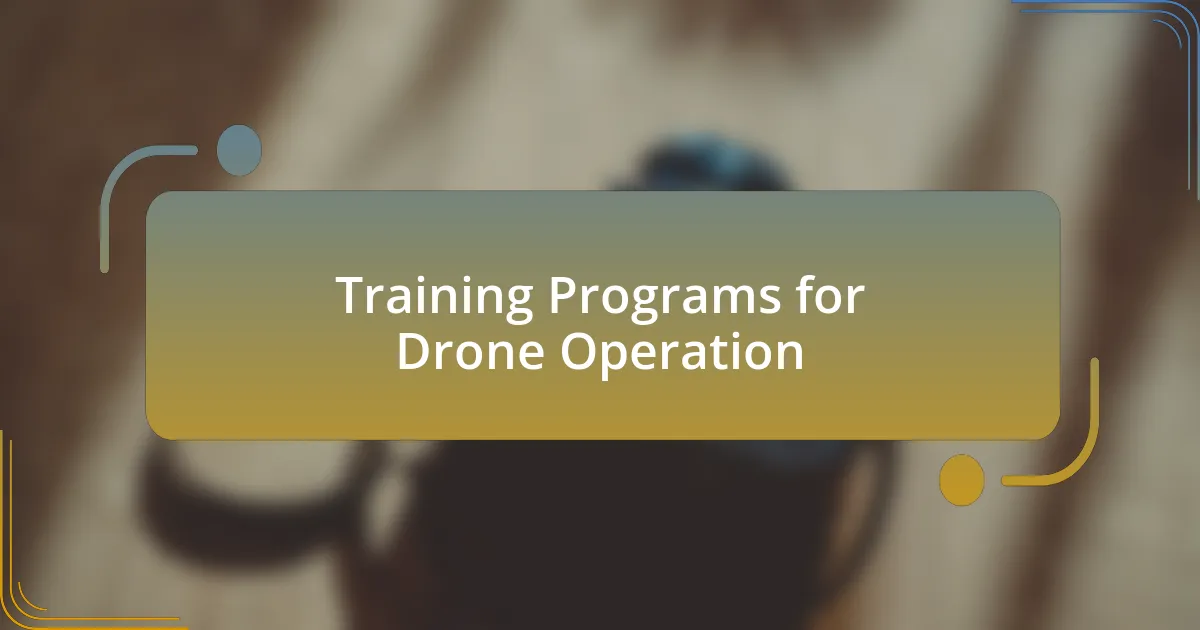
Training Programs for Drone Operation
Training programs for drone operation are crucial for anyone looking to enhance their filmmaking skills. I remember my first experience in a drone workshop; the instructors were incredibly knowledgeable and shared firsthand accounts of their aerial shoots, which added a layer of authenticity to the lessons. Have you ever been guided by someone who just gets it? That hands-on experience is invaluable.
Several training programs focus on different aspects, from basic flight skills to advanced cinematic techniques. I once enrolled in a course that taught not just how to operate the drone but also how to frame shots like a pro. I left feeling empowered, as if I had the entire sky as my canvas, ready to unleash my creativity. What skills do you find most essential for making great drone footage?
Moreover, safety and regulations are essential components of any comprehensive drone training. In one session, we discussed local laws regarding drone usage, and I was surprised at the nuances I was previously unaware of. Knowing what airspace to avoid can make a massive difference, potentially saving you from expensive fines or even worse outcomes during a shoot. Isn’t peace of mind something every filmmaker craves? It’s imperative to integrate safety knowledge with operational training to become a well-rounded drone operator.
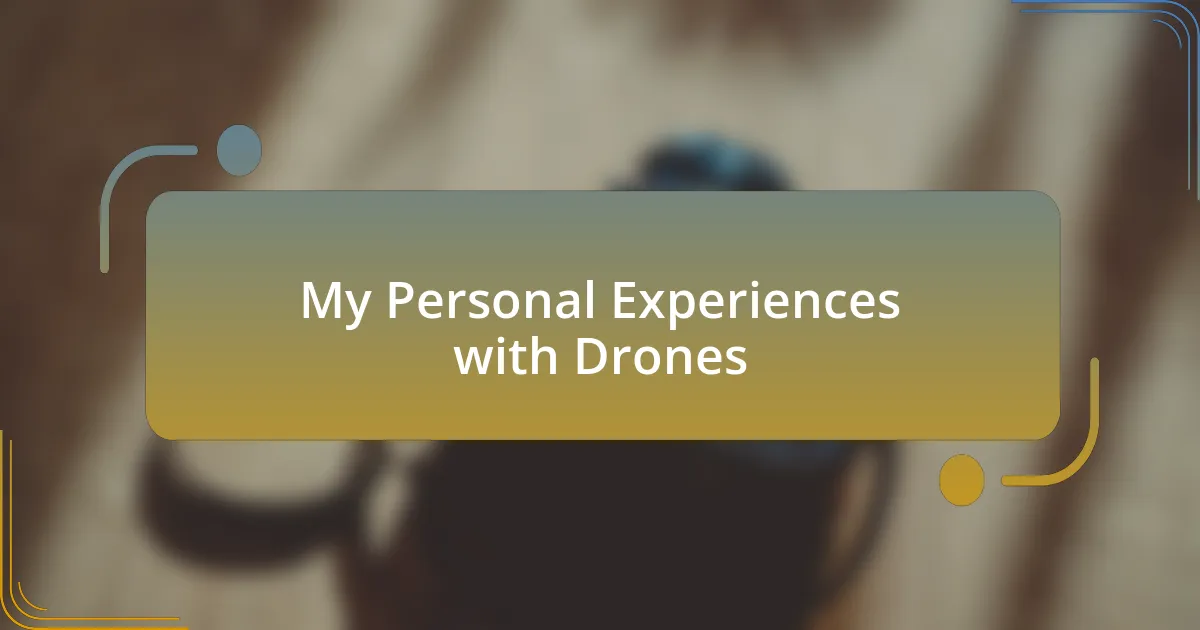
My Personal Experiences with Drones
When I first took a drone into the field, I was filled with a mix of excitement and nerves. I vividly recall hovering over a picturesque landscape, the drone’s camera capturing angles I wouldn’t have imagined were possible. There’s something almost surreal about seeing the world from 400 feet up; it’s like getting a glimpse of a hidden dimension to storytelling.
On another occasion, I was tasked with filming a local festival. The energy was electric on the ground, but from above, I could see patterns and movements that changed the narrative entirely. It was a revelation—how a bird’s-eye view could transform an ordinary scene into something extraordinary. Have you felt that thrill when you discover a new perspective? It’s that rush that keeps me coming back to work with drones.
There have been challenges too, of course. Once, during a shoot, I miscalibrated the drone and ended up losing it for what felt like an eternity. That panic, combined with the disappointment of not getting the shots I envisioned, taught me a vital lesson about preparation and the unpredictability of technology. How often do we overlook the basics in our creative pursuits? It’s that balance of confidence and caution that I’ve found so essential in my journey with drones.
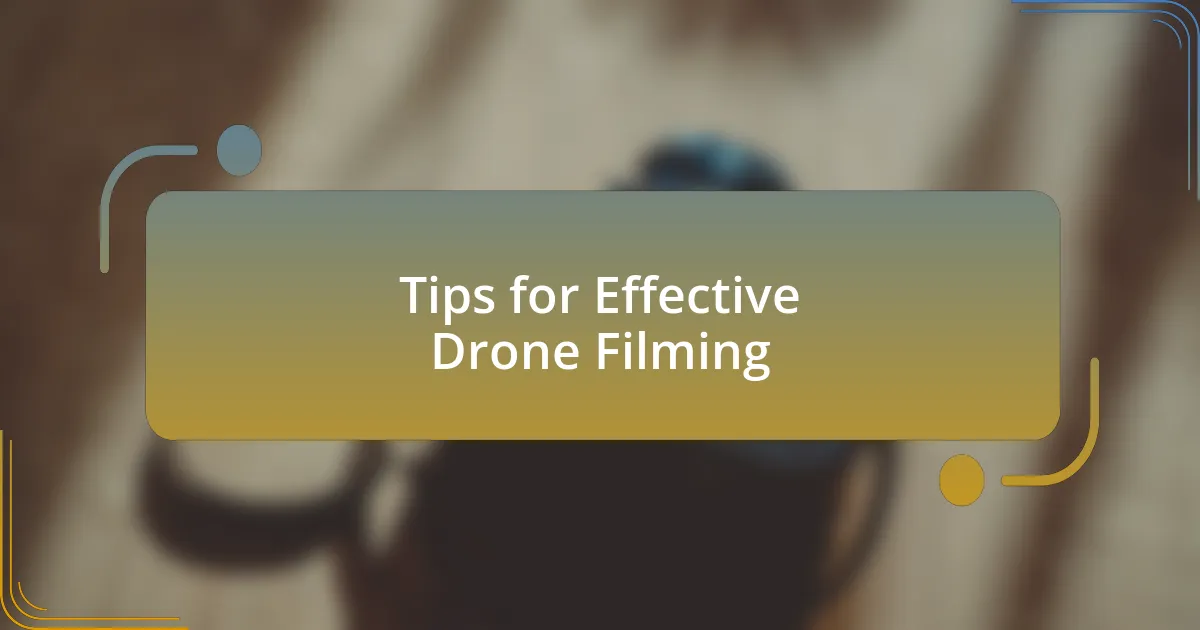
Tips for Effective Drone Filming
When planning a drone shoot, I always emphasize the importance of pre-flight checks. I remember one shoot where I got so excited that I skipped this part and my drone encountered a minor technical glitch mid-air. The resulting scare reminded me that taking just a few minutes to ensure everything is in working order can save you both time and stress. So, ask yourself: wouldn’t you rather spend five minutes double-checking your equipment than risk losing a key shot?
One useful tip I’ve adopted is to practice flying in different environments before the big day. On one occasion, I spent a weekend in an open field, experimenting with speed and maneuverability. It gave me the confidence to handle unexpected situations during an actual shoot. Have you ever found yourself overwhelmed by a new setting? Practicing beforehand can make all the difference in ensuring you stay calm when it counts.
Lastly, think about the type of shots you want to capture ahead of time. I’ve learned that having a shot list can tremendously streamline the process. During a recent project, I aimed for specific aerial angles that added depth to the narrative. This planning not only kept me focused but also ensured I utilized the drone’s capabilities to their fullest. Wouldn’t you agree that having clarity in your vision enhances creativity?